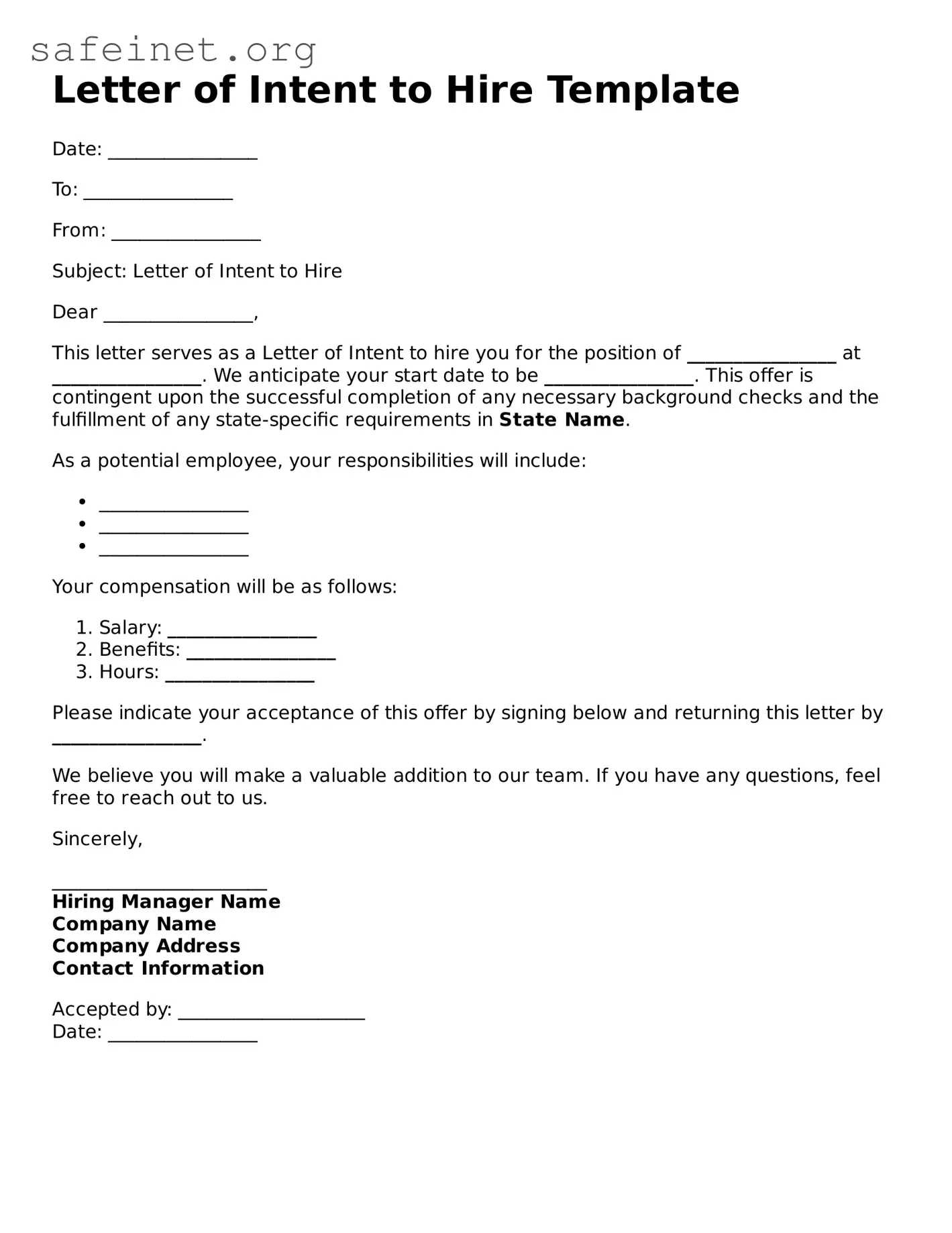What is a Letter of Intent to Hire?
A Letter of Intent to Hire is a preliminary document indicating an employer's intention to offer a job to a candidate. It outlines the basic terms of the employment, including position, start date, and salary. While it is not a formal contract, it serves as a commitment to the candidate that the employer is serious about the hiring process.
Is a Letter of Intent to Hire legally binding?
No, a Letter of Intent to Hire is typically not legally binding. It expresses the employer's intention but does not create a legal obligation to hire. The final employment agreement, which would be signed by both parties, is what establishes binding terms and conditions of employment.
When should a company issue a Letter of Intent to Hire?
A company may issue a Letter of Intent to Hire after selecting a candidate but before completing the formal hiring process. This can occur after interviews and background checks, ensuring candidates feel secure while waiting for final paperwork to be completed.
What should be included in a Letter of Intent to Hire?
The Letter should include key details like the job title, salary, start date, work location, and any benefits. It’s also beneficial to mention any contingencies, such as background checks or reference checks, that need to be cleared before the final offer can be made.
Can a candidate negotiate terms after receiving a Letter of Intent to Hire?
Yes, candidates can negotiate terms after receiving a Letter of Intent to Hire. It can be an opportunity for both parties to clarify expectations and make adjustments to salary, benefits, or start dates before finalizing the employment contract.
How does a candidate respond to a Letter of Intent to Hire?
A candidate should respond to a Letter of Intent to Hire by expressing gratitude for the offer and confirming their acceptance or discussing any questions or concerns. It is advisable to respond in writing, keeping the communication professional and courteous.
Is it customary to receive a Letter of Intent to Hire for all job offers?
Not all job offers include a Letter of Intent to Hire. It is more common in certain industries or for higher-level positions where negotiation of terms might be expected. Each company has its own hiring practices, so the use of this letter can vary.
What should a candidate do if the Letter of Intent to Hire includes unexpected terms?
If a Letter of Intent to Hire includes unexpected terms, the candidate should address these terms directly with the employer. Open communication can resolve misunderstandings, and it is vital to clarify any issues before moving forward with the hiring process.
Can a Letter of Intent to Hire be revoked by the employer?
Yes, an employer can revoke a Letter of Intent to Hire at any time before a formal contract is signed. This revocation might occur due to changes in company circumstances, budget adjustments, or failure to complete necessary background checks. It is important for candidates to understand this possibility.
